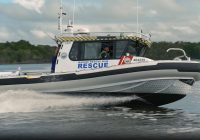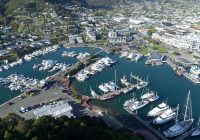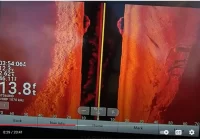By George B. Bellwoar
When considering emissions control in the marine industry, many look at engines and manufacturing processes as the culprits. For sure, both contribute. But they are not the only sources of emissions. For example, spilled gasoline and diesel fuel both pollute our water. And evaporating gasoline adds to air pollution. And there is another source of pollution from boats that many don’t even realise exists – diurnal emissions.
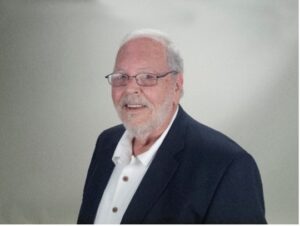
The diurnal cycle describes the daily temperature swing from nighttime to daytime. As the earth rotates, the sun warms the parts it faces during the day. Then those parts cool at night. Materials expand when heated and contract when cooled. Gasoline is no different. It expands quite a bit with temperature changes. It can grow nearly 1% for every 15⁰ F (or 1% for every 8⁰ C.). So, a tank with 200 liters at 6⁰C. could have 210 liters at 46⁰C., a reachable temperature in a boat stored in blue shrink wrap.
Unlike water, a molecule, gasoline is a complex liquid solution of many different (mostly hydrocarbon) molecules. Several of these molecules evaporate around room temperature. It is one of the reasons that gasoline gets “stale” over time. So, the top of a half-filled tank contains hydrocarbon vapor, not the air you’d want to breathe.
We have diurnal emissions when the evaporation of hydrocarbons combines with the diurnal cycle that expands and contracts fuel and pushes vapors out of the tank daily. Gasoline-powered boats stored outside emit hydrocarbons from their tank through the vent and into the atmosphere daily.
Since 2010, the United States has controlled diurnal emissions from boats by law. It has been the only country to do so. There is “talk” in Europe and Australia, but regulations are probably 3 to 5 years away.
Therein lies an opportunity for boat builders. Many talk the green talk. However, when it comes to diurnal emissions, only a few European builders walk the green walk.
Automobile manufacturers worldwide added diurnal emission control nearly 50 years ago. Boats sold in America have had similar features for over a decade. This technology is proven. It even offers benefits beyond diurnal emission control, some of which apply to diesel-powered boats. For example, boats using these systems force automatic pump shutoff – just like in cars. So gone are the days of watching for a squirt of fuel to know when your boat is full. Also gone are the days of fuel leaking out of your vent on a hot day. These systems make filling boats easy and eliminate premature shutoffs. Ensuring ullage (airspace) in the tank allows room for fuel expansion. The release of harmful vapors into the atmosphere gets controlled while the evaporation of expensive gasoline is limited.
Diesel systems differ from gasoline systems because, unlike gasoline, diesel fuel doesn’t readily evaporate once spilled. So, spillage is the problem, not diurnal or evaporative emissions. When spilled, diesel fuel floats around until it eventually sticks to something. Therefore, avoiding diesel spills is especially important. And doing so is surprisingly inexpensive. Since we’re not worried about evaporative emissions, diesel systems only need to create airspace and shut off fuel pumps to prevent spills, which can often be done for less than 100 Euros on smaller diesel boats under about 20 meters.
In most cases, even complex systems are affordable. In all cases, the benefits are great. And boat builders, system integrators, and designers can customise these systems based on varying goals, such as tighter emission control, ease of installation, price, safety, space utilisation, and even range.
In our next article on diurnal emissions, we’ll explain how US builders do this, describe the different types of systems available, and then discuss the pros and cons of each approach.
George B. Bellwoar
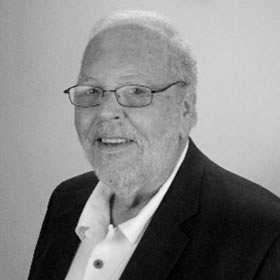
Working in the marine industry for 40 years, George’s background includes non-ferrous alloys for military marine applications (Ampco Metals), marine switches and locks (General Automotive, now part of Dometic), lighting, deck and underwater hardware (Wilcox Crittenden and Perko), and commercial boat navigation, searchlights, and gasoline fuel systems (Perko).
He has worked with OEMs, boat builders, and distributors throughout North America and Europe, and has extensive experience in component part sales, use, and installation. George is an expert in navigation lighting, marine fuel systems, diurnal emission systems.
George has served on numerous National Marine Manufacturers Association (NMMA) committees including Education and Discover Boating. He was the primary author of the NMMA’s Best Practices Manual for Supply Chain Management. He has also served on numerous American Boat and Yacht Council (ABYC) technical committees including navigation lighting and fuel systems.
George is a past Chairman of the Boards of both the NMMA and the ABYC, where he has received numerous leadership awards. He has a BA from LaSalle University and an MBA from Drexel University, both in Philadelphia, PA. He holds an SCPro I certification from the Council of Supply Chain Management Professionals (CSCMP) and teaches Supply Chain Management, Customer Service Management and Procurement Management part-time at a college in Florida.
George is based in United States and Canada. Those wishing to contact George can do so on +1 954 646 5920 or
shing to contact GMBA in Australia can do so through MaryAnne Edwards or call +61 412 916 036
Global Marine Business Advisors and its associated website www.gmba.blue are not registered legal entities. GMBA is a network of independent marine industry advisors.







